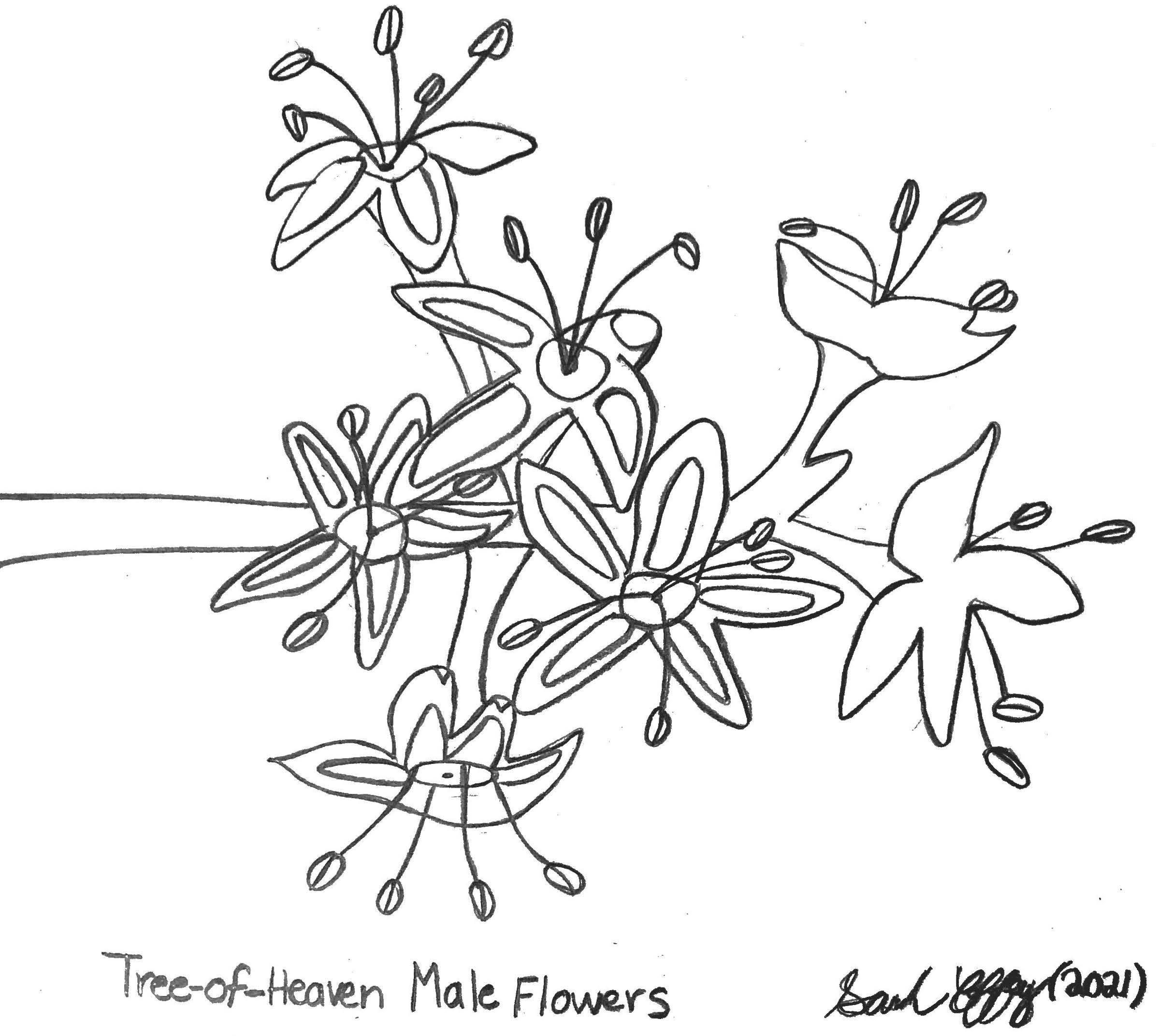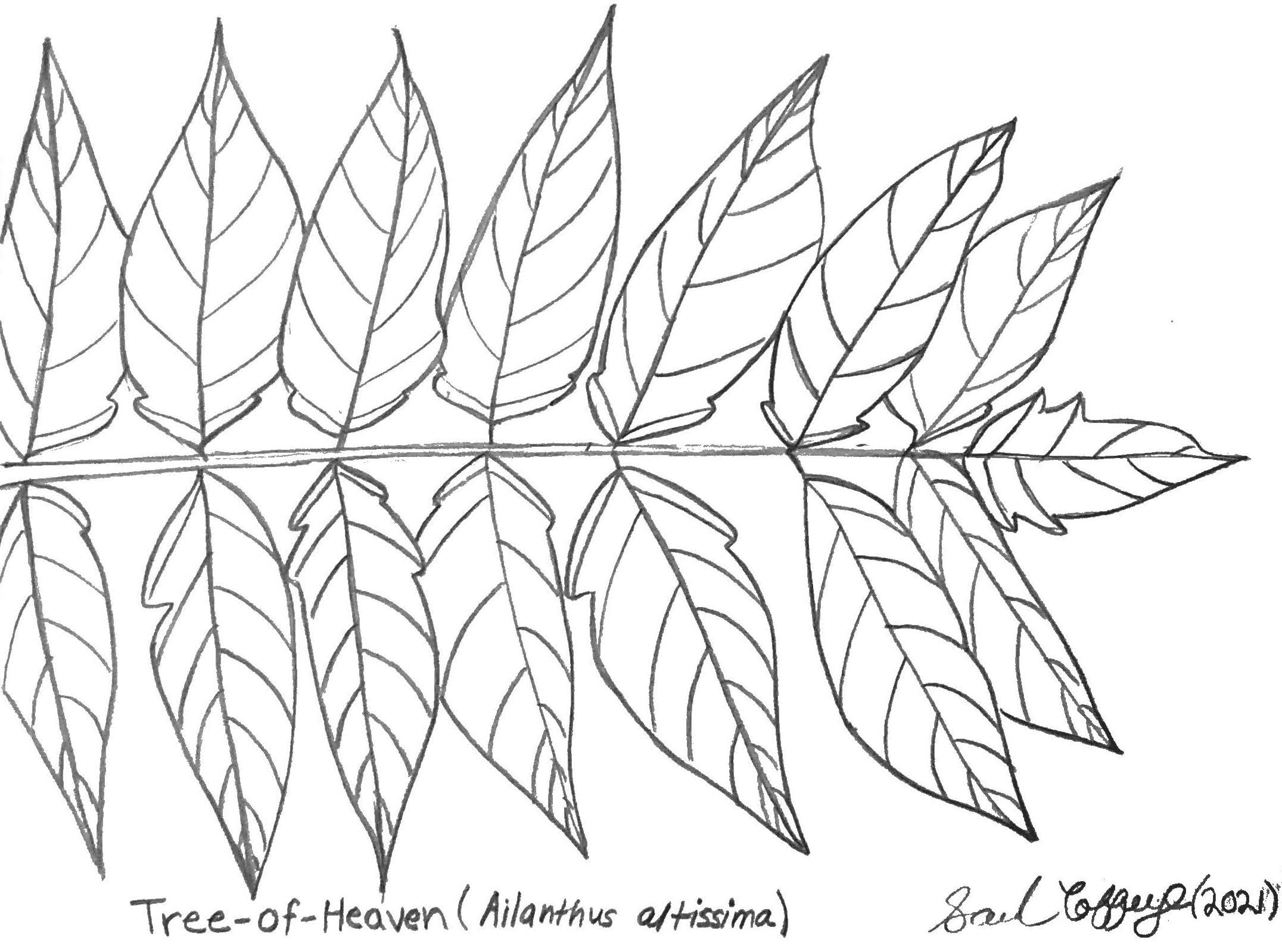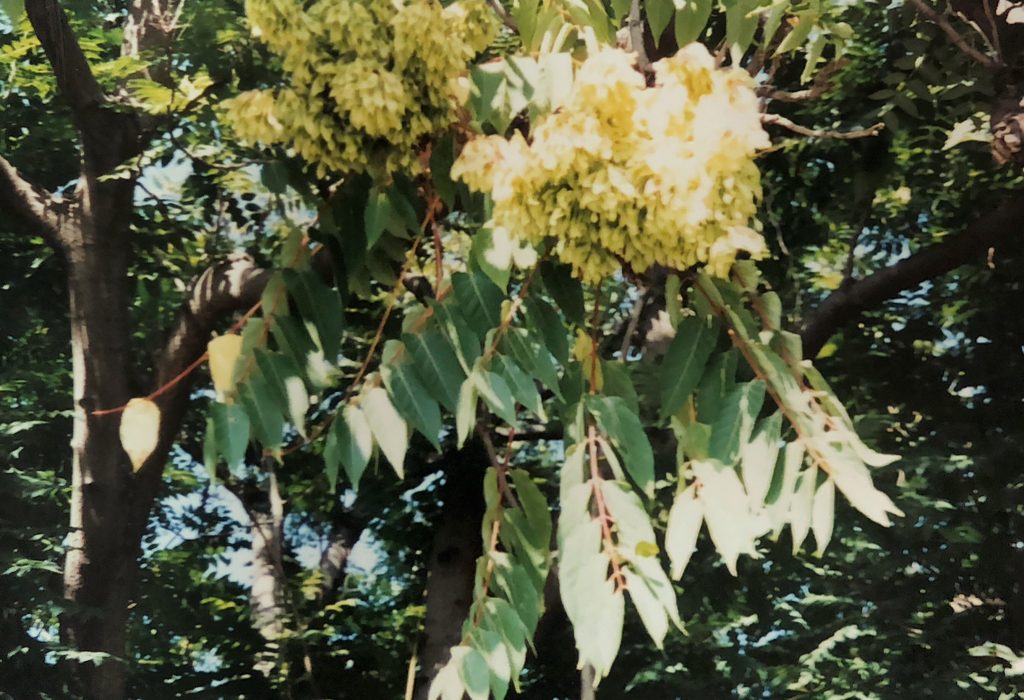Tree-of-Heaven: A “Dirty Dozen” Plant
This week we are featuring tree-of-heaven (Ailanthus altissima) as our “Dirty Dozen” plant. While this tree may have been used in folk medicine or even as an insecticide, it is diabolical for our Virginia native ecosystems.
Tree-of-Heaven
Ailanthus altissima is a member of the quassia (Simaroubaceae) family (PDF). This small to medium-sized tree is dioecious, meaning that it has separate male and female plants. It produces yellow inflorescences (flower clusters) in early spring. Like maples (Acer spp.), A. altissima has samaras (winged seeds) that allow wind to transport seeds far from the parent plant. Moreover, just one female tree can produce over 300,000 seeds in a year!

The male flowers of tree-of-heaven smell like rancid or burnt peanut butter. Drawing by Sarah Coffey.
How Did it Get Here?
Native from China all the way to Australia (PDF), tree-of-heaven came to the United States as the result of two separate introductions: 1) on the East Coast by a Philadelphia gardener in 1784, and 2) on the West Coast by Chinese immigrants who brought the plant for its medicinal uses.
Where is it Found?
Geographic Region: A. altissima is listed as a high-risk invasive species (PDF) for all regions of Virginia. But it’s not just Virginians who struggle to control this plant: this map shows that tree-of-heaven has been reported in every U.S. state excluding Montana, Wyoming, North Dakota and South Dakota.
Habitat: Tree-of-heaven thrives in areas where natural or human-created disturbances have occurred (PDF). Thus, you may encounter A. altissima invasions in forests after severe storm events or in abandoned lots and roadsides.
What is the Impact of Tree-of-Heaven on the Environment?
Like other members of the “Dirty Dozen,” Tree-of-Heaven competes with native plant communities for light, nutrients and space. What’s more, is that it produces toxins called allelochemicals (PDF) that prevent the growth of nearby plants. Tree-of-heaven also grows root suckers up to 50 feet away from the parent plant. Its rapidly growing root system can damage underground pipes, sewers and building foundations; therefore, A. altissima invasions have great ecological and economic costs.
What Options Exist for Controlling Tree-of-Heaven?
Before removing tree-of-heaven, you should know that it is often confused with black walnut (Juglans nigra) and sumac (Rhus spp.). One of its distinctive features is that male flowers and crushed leaves smell like burnt peanut butter. Other tips for identifying A. altissima can be found on pages 12-13 of Mistaken Identity?: Invasive Plants and Their Native Look-Alikes (PDF). All sightings of tree-of-heaven should be reported to the Virginia Invasive Species Working Group.
Controlling tree-of-heaven is extremely complicated, and it’s important to have a plan of action spanning several years to eradicate it successfully. Strictly mechanical removal methods are ineffective because tree-of-heaven resprouts from roots, and root suckers can spread anywhere within a 50-foot radius. Hand-pulling may work only for small seedlings if the soil is moist enough to remove roots completely (yes, even small root fragments!)
Penn State Extension provides a thorough description of removal techniques, which involve repeated follow-ups with systemic herbicides (herbicides that are absorbed by either foliage or roots but then move throughout the plant). We recommend watching this video on tree-of-heaven removal because it provides demonstrations of these techniques and other helpful visuals. The key takeaway relates to the timing of herbicide application: to kill the roots, herbicides should be applied during mid-late summer (July-September) when the tree is transporting nutrients/sugars down to the roots. Otherwise, it will come back even stronger. Remember to follow all labels and consult with your local Virginia Cooperative Extension office for assistance if needed.
What are Native Substitutes?
Looking for natives to Virginia’s Capital Region (Richmond) to replace tree-of-heaven? A few great alternatives are eastern redbud (Cercis canadensis), common persimmon (Diospyros virginiana) or winged sumac (Rhus copallinum).
Want to Know More?
For more information, check out Invasive Alien Species of Virginia (PDF) and the USDA National Invasive Species Information Center.
Do not consume medicinal plants without the advice of a doctor.

A. altissima leaves usually contain 11-25 lance-shaped leaflets with toothed edges at the base. Drawing by Sarah Coffey.
Updated 3/18/21
